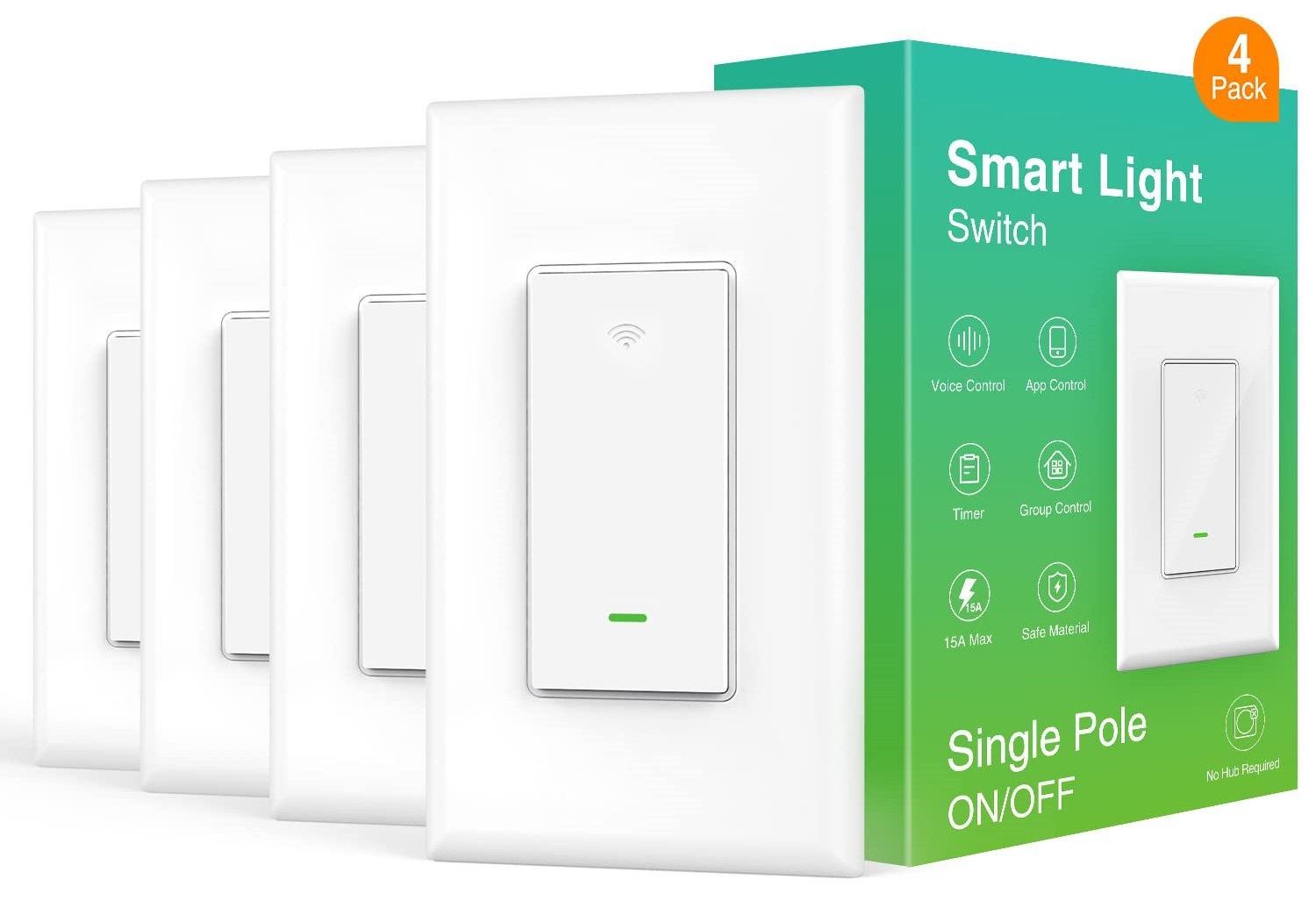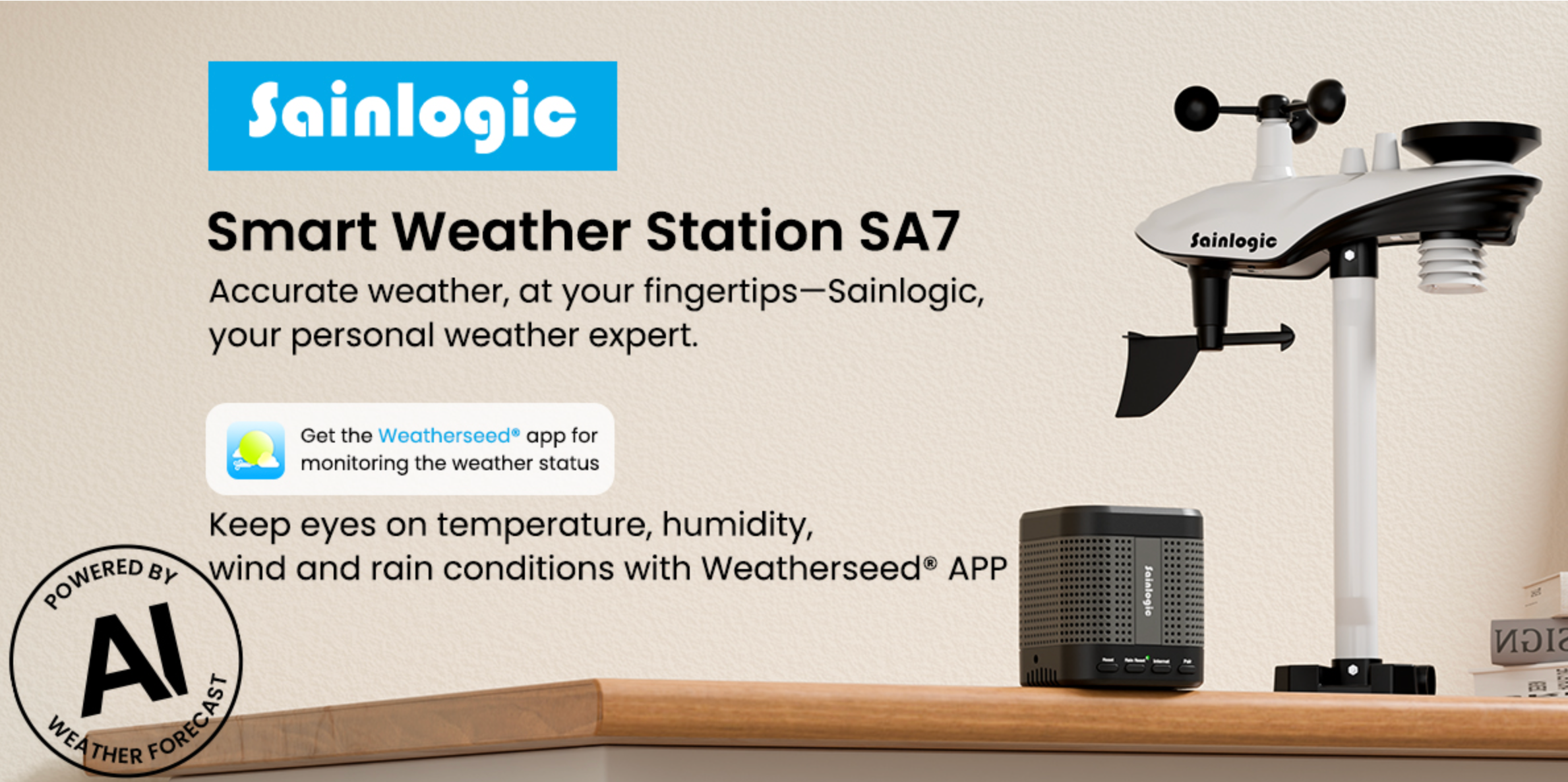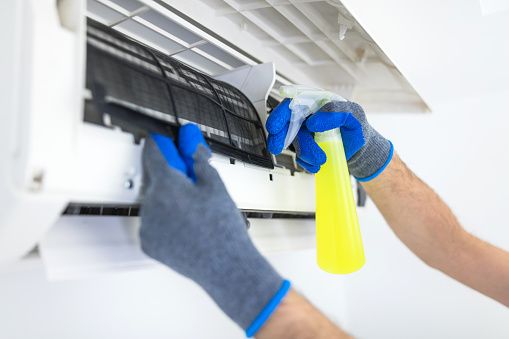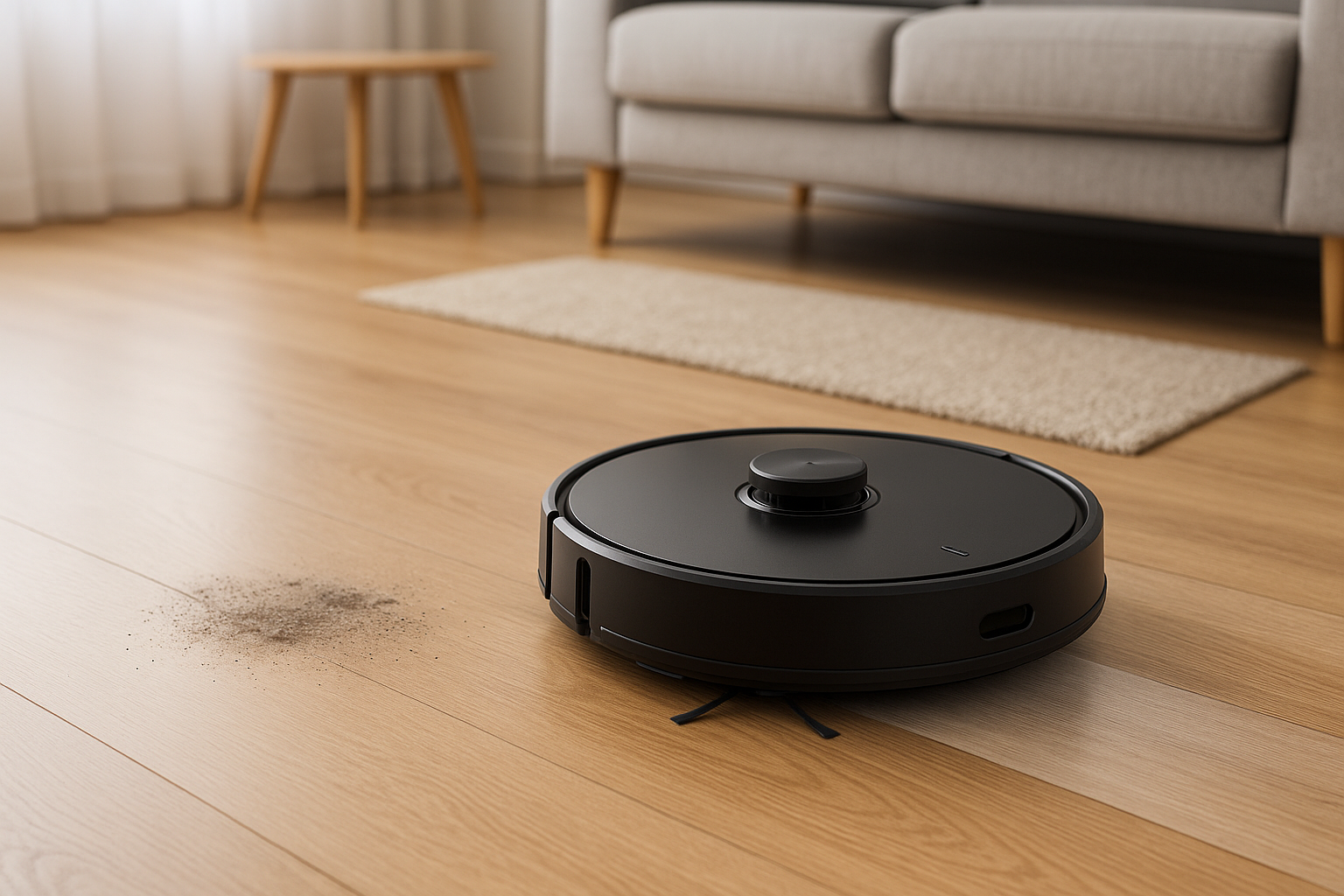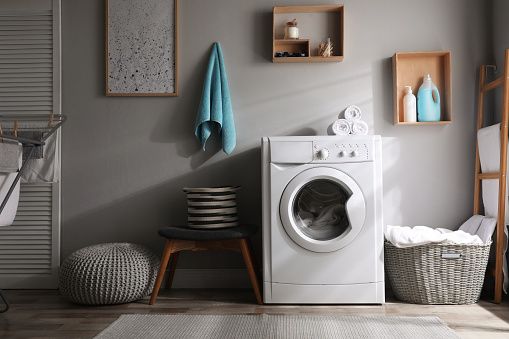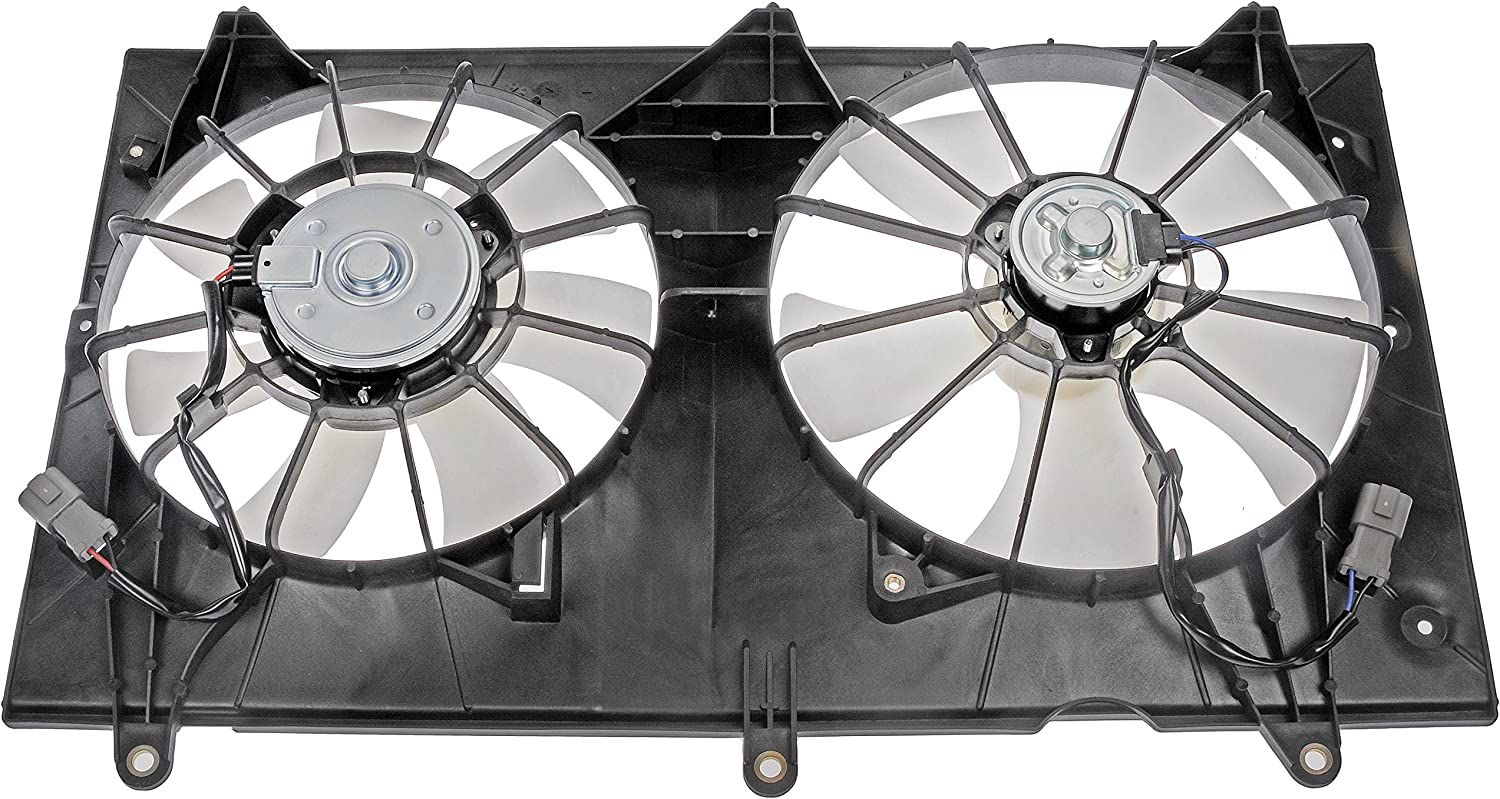
In this guide, we will explore the importance of maintaining and cleaning your cooling fan, providing you with practical tips and techniques to keep it in excellent condition. Whether you have a desktop computer, gaming console, or laptop, these maintenance practices will help you prolong the life of your cooling fan and prevent potential issues caused by overheating.
Join us as we delve into the world of cooling fan maintenance, and discover how a little care and attention can go a long way in preserving the performance and longevity of this vital component. Let's dive in!
1. Importance of maintaining and cleaning cooling fans for longevity
Cooling fans play a crucial role in maintaining the optimal performance and longevity of various electronic devices and equipment. Whether it's a computer, gaming console, or even a refrigerator, these fans are responsible for dissipating heat and preventing overheating. However, many individuals overlook the importance of regular maintenance and cleaning of cooling fans. We will delve into the significance of maintaining and cleaning cooling fans to ensure their longevity and effective cooling performance.
Efficient Heat Dissipation:
Cooling fans are designed to extract hot air from electronic components, ensuring they operate within a safe temperature range. Over time, dust and debris can accumulate on the fan blades and vents, obstructing the airflow. This buildup hampers the cooling process, leading to increased temperatures and potentially causing damage to sensitive internal components. Regular cleaning of cooling fans removes these obstructions, allowing for efficient heat dissipation and preventing overheating.
Extending Lifespan:
Electronic devices are a significant investment, and we all want them to last as long as possible. Neglecting cooling fan maintenance can significantly shorten the lifespan of your equipment. When a cooling fan becomes clogged with dust and debris, it is forced to work harder, placing undue stress on the motor and bearings. This extra strain can lead to premature fan failure and may even result in damage to other components. By regularly cleaning and maintaining cooling fans, you can extend their lifespan and protect your valuable devices.

Preventing System Instability and Performance Issues:
Overheating caused by poor cooling fan maintenance can result in system instability and reduced performance. Excessive heat can cause electronic components to malfunction, leading to unexpected crashes, freezes, and slow operation. By keeping cooling fans clean, you can ensure proper airflow and prevent heat-related performance issues. This is particularly important for gaming consoles, as intense gaming sessions can generate substantial heat, making efficient cooling even more critical.
Minimizing Noise Levels:
Neglected cooling fans often become noisy due to the accumulation of dirt and debris. As the fan blades become unbalanced or encounter resistance from blockages, they produce excessive noise while spinning. This can be highly disruptive and annoying, especially when using devices in quiet environments. Cleaning the cooling fans regularly reduces noise levels, making your experience more enjoyable and preventing potential distractions.
Improving Energy Efficiency:
Cooling fans that are dirty or obstructed consume more power to achieve the same cooling effect. As the fan struggles to move air through accumulated dust and debris, it requires higher rotational speeds, leading to increased energy consumption. Regular cleaning of cooling fans ensures that they operate optimally, resulting in improved energy efficiency and potentially lower electricity bills.
Maintaining and cleaning cooling fans is vital for the longevity and optimal performance of electronic devices. By regularly removing dust and debris from cooling fans, you enable efficient heat dissipation, extend the lifespan of your equipment, prevent system instability, and minimize noise levels. Additionally, clean cooling fans contribute to improved energy efficiency, benefiting both your devices and your wallet. Make it a habit to include cooling fan maintenance in your regular cleaning routine, and you'll enjoy the reliable performance and prolonged lifespan of your cherished electronics.
2. Overview of the benefits of regular maintenance
Regular maintenance is a key aspect of keeping various systems, appliances, and equipment in optimal condition. Whether it's your car, home, or electronic devices, neglecting maintenance can lead to costly repairs, reduced performance, and even safety hazards. We will provide an overview of the benefits of regular maintenance across different areas of our lives, emphasizing the importance of proactive care and attention.
Cost Savings:
One of the primary benefits of regular maintenance is cost savings in the long run. By addressing minor issues and performing routine maintenance tasks, you can prevent major breakdowns and avoid expensive repairs or replacements. For example, regular oil changes, tire rotations, and inspections can extend the lifespan of your car's engine and improve fuel efficiency. Similarly, maintaining household appliances, such as HVAC systems and refrigerators, can prevent costly breakdowns and increase energy efficiency, saving you money on utility bills.
Enhanced Performance and Efficiency:
Regular maintenance plays a vital role in ensuring optimal performance and efficiency. By keeping systems and equipment properly maintained, you can maximize their functionality and productivity. For instance, regularly cleaning and tuning up your computer can improve its speed, responsiveness, and overall performance. In the case of HVAC systems, regular maintenance, including filter replacements and duct cleaning, can enhance airflow, temperature regulation, and energy efficiency. By investing in regular upkeep, you can enjoy better performance from your possessions.\
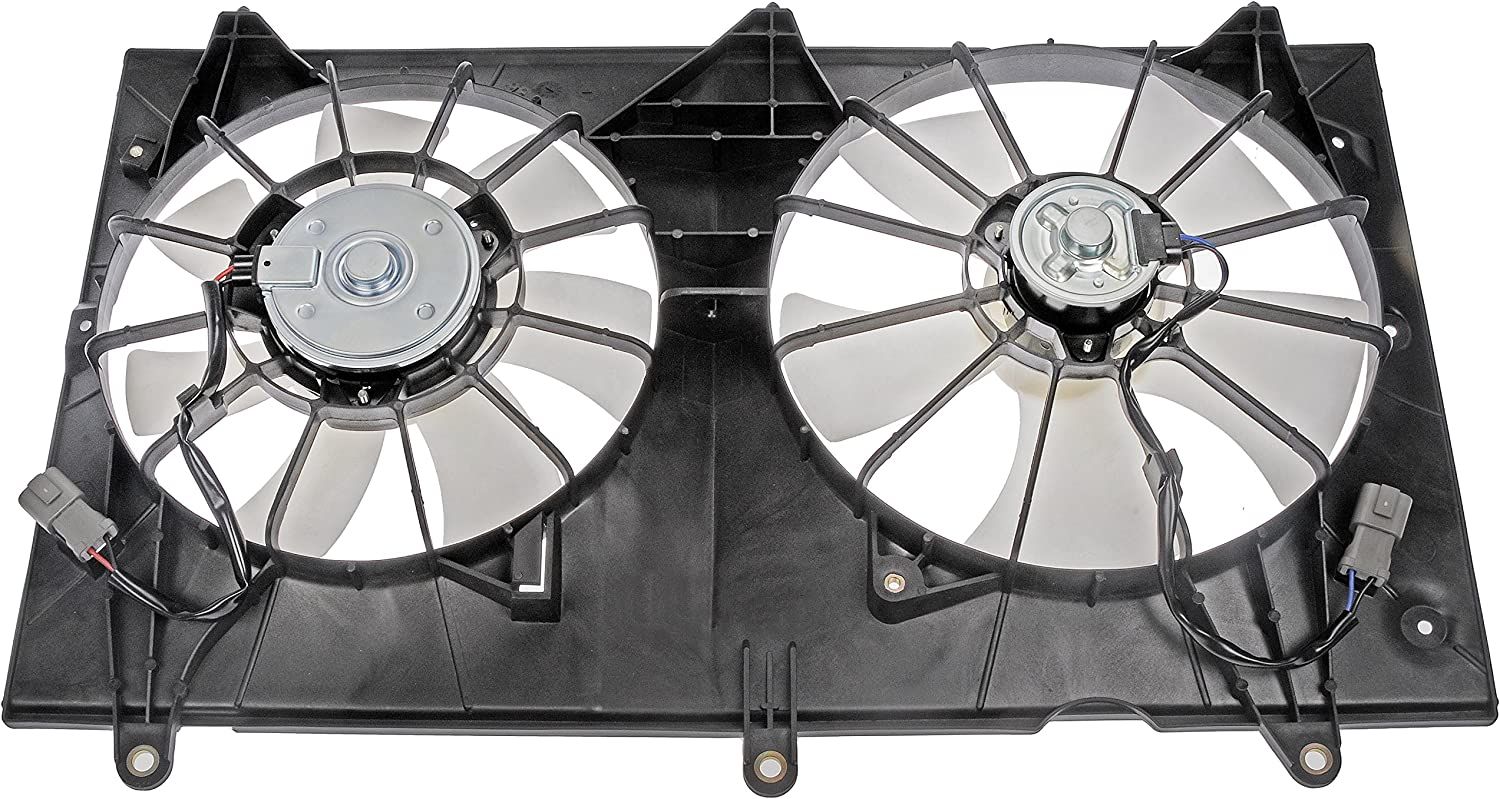
Increased Lifespan:
Just as our bodies require regular exercise and healthy habits to thrive, the same principle applies to our belongings. Regular maintenance significantly extends the lifespan of various items, saving you money on premature replacements. For example, regular servicing of your car's engine, transmission, and suspension can help prevent wear and tear, enabling it to run smoothly for many more miles. Similarly, maintaining the integrity of your home's infrastructure, such as roofs, plumbing, and electrical systems, can prevent structural damage and prolong its lifespan.
Safety Assurance:
Regular maintenance contributes to a safer environment by addressing potential hazards and ensuring the proper functioning of equipment. From checking the wiring in your home to maintaining fire alarms and carbon monoxide detectors, proactive maintenance can help prevent accidents and protect your loved ones. Similarly, regular inspections and maintenance of vehicles can identify potential safety issues before they escalate, reducing the risk of accidents on the road.
Peace of Mind:
Knowing that your possessions are well-maintained provides a sense of peace and confidence. Regular maintenance gives you the assurance that everything is in good working order and is less likely to fail when you need it most. This peace of mind translates into reduced stress levels and improved overall well-being, allowing you to focus on other important aspects of your life.
Regular maintenance is a crucial aspect of responsible ownership, whether it pertains to vehicles, appliances, or other equipment. By investing time and effort into proactive care, you can reap numerous benefits, including cost savings, enhanced performance, increased lifespan, improved safety, and peace of mind. Make it a habit to prioritize regular maintenance in all areas of your life, and you'll enjoy the long-term rewards of a well-maintained and functional environment.
1. Explanation of the cooling fan's function and purpose
A cooling fan is a device designed to circulate air and dissipate heat, typically used in electronic devices, machinery, and systems to prevent overheating. The primary function of a cooling fan is to regulate the temperature of the components it is attached to by removing excess heat.
When electronic components or machinery operate, they generate heat due to the electrical energy being converted into other forms, such as mechanical work or light. If this heat is not effectively managed and removed, it can lead to increased operating temperatures, which can degrade performance, reduce lifespan, and even cause malfunctions or failures.
Cooling fans work by drawing cool air from their surroundings and directing it toward the heated components. They usually consist of an electric motor with fan blades attached to it. When the motor rotates, it spins the blades, creating a flow of air. This airflow helps in two ways:
Heat Transfer: The movement of air facilitates convective heat transfer. The fan blows cooler air onto the hot components, which absorb some of the heat and become warmer. This warm air is then expelled, making room for more cool air to flow in and continue the process. This constant exchange of air helps carry away the heat generated by the components, maintaining lower temperatures.
Air Circulation: The continuous airflow generated by the fan promotes better overall air circulation within the system. It prevents stagnant pockets of air from forming around the components, which can trap heat and increase local temperatures. By ensuring a steady flow of air, the fan helps distribute the heat evenly and reduces the chances of hotspots.
Cooling fans are commonly found in computers, laptops, servers, gaming consoles, power supplies, and various industrial machinery. They are often placed near heat-generating components such as processors, graphics cards, or power transformers to provide targeted cooling. Some systems may have multiple fans working together to increase the airflow and cooling efficiency.
It's worth noting that cooling fans are just one component of a larger cooling system. In many cases, they are complemented by heat sinks, which are metal structures that provide a larger surface area for heat dissipation. Heat sinks absorb heat from components and use the airflow generated by the fan to disperse it into the surrounding environment.
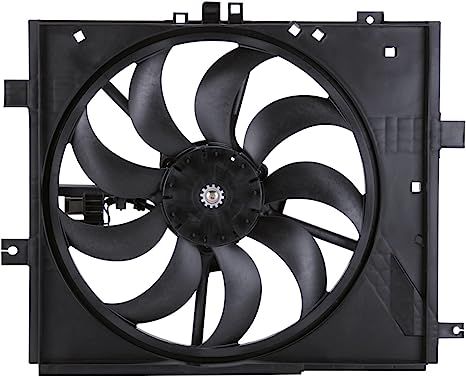
2. Different types of cooling fans and their usage
Cooling fans work by drawing cool air from their surroundings and directing it toward the heated components. They usually consist of an electric motor with fan blades attached to it. When the motor rotates, it spins the blades, creating a flow of air. This airflow helps in two ways:
Heat Transfer
The movement of air facilitates convective heat transfer. The fan blows cooler air onto the hot components, which absorb some of the heat and become warmer. This warm air is then expelled, making room for more cool air to flow in and continue the process. This constant exchange of air helps carry away the heat generated by the components, maintaining lower temperatures.
Air Circulation
The continuous airflow generated by the fan promotes better overall air circulation within the system. It prevents stagnant pockets of air from forming around the components, which can trap heat and increase local temperatures. By ensuring a steady flow of air, the fan helps distribute the heat evenly and reduces the chances of hotspots.
Cooling fans are commonly found in computers, laptops, servers, gaming consoles, power supplies, and various industrial machinery. They are often placed near heat-generating components such as processors, graphics cards, or power transformers to provide targeted cooling. Some systems may have multiple fans working together to increase the airflow and cooling efficiency.
It's worth noting that cooling fans are just one component of a larger cooling system. In many cases, they are complemented by heat sinks, which are metal structures that provide a larger surface area for heat dissipation. Heat sinks absorb heat from components and use the airflow generated by the fan to disperse it into the surrounding environment.
Overall, cooling fans play a crucial role in preventing overheating and ensuring the optimal performance and longevity of electronic devices and machinery by efficiently managing and removing excess heat.
1. Safety precautions and guidelines
When using a cooling fan, it's important to follow certain safety precautions and guidelines to ensure your safety and prevent any accidents or injuries. Here are some safety tips to keep in mind:
Placement
Place the cooling fan on a stable and flat surface to prevent it from falling over. Avoid placing it near the edge of tables or other surfaces where it could easily tip.
Power source
Ensure that the fan is plugged into a properly grounded electrical outlet. Avoid using extension cords or power strips unless they are specifically designed for high-powered devices like fans.
Cords
Keep the power cord and any extension cords away from areas where people might trip over them. Make sure the cords are not damaged or frayed.
Ventilation
Allow proper ventilation around the fan by keeping it away from obstructions such as curtains, furniture, or walls. Maintain a distance of at least a few feet to prevent the airflow from being blocked.
Cleaning
Regularly clean the fan blades and grills to remove dust and debris buildup. Unplug the fan before cleaning, and use a soft cloth or brush to gently wipe the blades and grills. Do not use any liquid cleaners or immerse the fan in water.
Children and pets
Keep the fan out of reach of children and pets. Ensure that they are supervised around the fan to prevent any accidents or injuries.
Operating environment
Avoid using the fan in wet or damp conditions to reduce the risk of electrical shock. Additionally, do not use the fan near water sources or in bathrooms.
Unattended operation
It's best not to leave the fan unattended while it's running, especially if there are children or pets in the area. Turn off the fan when you leave the room or when it's not needed.
Repairs
If your fan is not working properly, do not attempt to repair it yourself, especially if it involves electrical components. Instead, contact a qualified professional or the manufacturer for assistance.
Manufacturer's instructions
Always read and follow the manufacturer's instructions and guidelines provided with the cooling fan. They may contain specific safety information or usage recommendations.
By adhering to these safety precautions and guidelines, you can enjoy the benefits of a cooling fan while minimizing any potential risks.
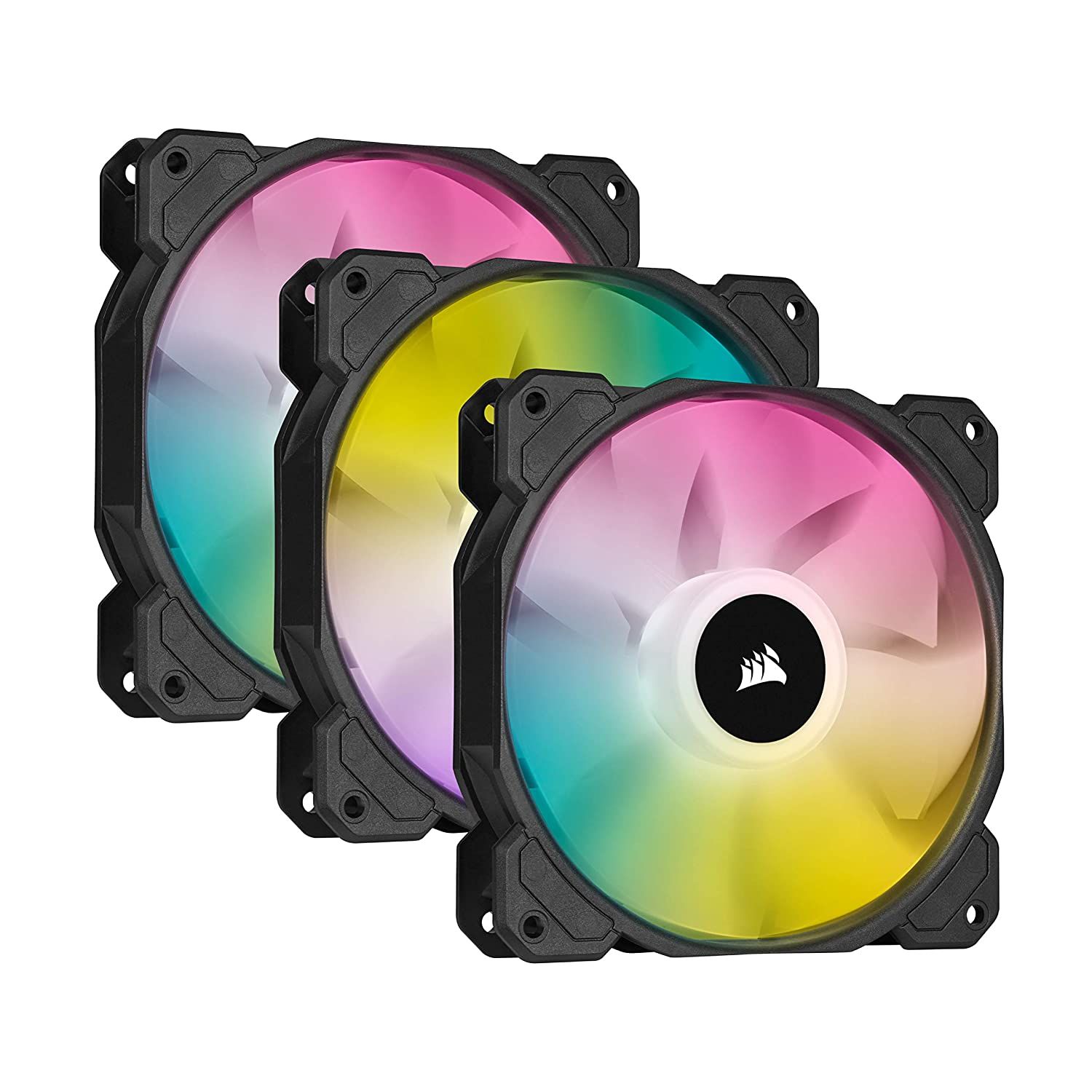
2. Tools and materials needed for the cleaning process
To clean a cooling fan, you will need the following tools and materials:
A soft cloth or microfiber cloth: These are used to wipe down the fan blades and grills. Make sure the cloth is clean and free from any lint or debris.
Brush or toothbrush: A small brush or an old toothbrush can be handy for removing dust and debris from hard-to-reach areas, such as the crevices between the fan blades.
Compressed air canister or air blower: This is an optional tool but can be helpful for blowing away stubborn dust or debris from the fan's components. It provides a powerful burst of air to dislodge particles.
Mild cleaning solution: If the fan blades or grills are particularly dirty, you may need a mild cleaning solution. Dilute a small amount of gentle detergent or dish soap in water to create a solution.
Water: You will need water for dampening the cloth or brush for cleaning purposes. However, be cautious when using water near electrical components and ensure the fan is unplugged.
Screwdriver (if necessary): Some cooling fans may require you to unscrew certain parts for thorough cleaning. Check the manufacturer's instructions or the fan's design to see if a screwdriver is needed.
Remember to always check the manufacturer's instructions for specific cleaning recommendations for your cooling fan, as different models may have unique requirements. Additionally, make sure the fan is unplugged before cleaning and avoid using excessive water or harsh chemicals that could damage the fan.
1. Step-by-step instructions for cleaning the exterior surfaces
Cleaning the exterior surfaces of a cooling fan is a relatively simple process. Here are step-by-step instructions to help you clean the exterior surfaces of a cooling fan:
Preparation:
Ensure that the cooling fan is disconnected from any power source. Unplug it from the electrical outlet or switch it off and remove the battery if it's a portable fan.
Gather the necessary cleaning supplies, such as a soft cloth or microfiber cloth, a mild cleaning solution (water and a gentle detergent), and a can of compressed air (optional).
Dusting:
Start by using a soft cloth or microfiber cloth to gently wipe away any loose dust or debris from the exterior surfaces of the cooling fan. This will help prevent scratches or smearing during the cleaning process.
Cleaning:
If there are any stains or sticky residue on the fan, dampen the cloth with a mild cleaning solution. Ensure that the cloth is not dripping wet, as excessive moisture can damage the fan. Alternatively, you can use a mild cleaning solution on a cotton swab to target specific areas.
Gently wipe the exterior surfaces of the cooling fan with a damp cloth, paying attention to any particularly dirty or stained areas. Use smooth, circular motions to remove the dirt.
If the cooling fan has grilles or vents, use the can of compressed air to blow away any dust or debris trapped in those areas. Hold the can of compressed air upright and use short bursts to avoid excessive pressure on the fan's components.
Drying:
After cleaning, allow the cooling fan to air dry for a few minutes. Ensure that all the surfaces are completely dry before reconnecting or using the fan.
Finishing touches:
Once the fan is dry, inspect the exterior surfaces to ensure they are clean and free of any residue. If necessary, repeat the cleaning process for stubborn stains or dirt.
If the cooling fan has any removable parts, such as fan blades or filters, clean them separately according to the manufacturer's instructions.
Finally, reconnect the cooling fan to the power source and test its functionality.

2. Utilizing compressed air or vacuum cleaners for thorough cleaning
Using compressed air or a vacuum cleaner can be effective for the thorough cleaning of a cooling fan. Here's how you can utilize these tools:
Preparation:
Ensure the cooling fan is disconnected from any power source. Unplug it from the electrical outlet or switch it off and remove the battery if applicable.
Gather the necessary cleaning supplies, including a can of compressed air and/or a vacuum cleaner with a brush attachment.
Compressed Air:
Hold the can of compressed air upright and attach the thin nozzle or straw that comes with it. This helps to direct the airflow precisely.
With gentle and controlled bursts, direct the compressed air toward the fan blades and grilles. Start from a distance and gradually move closer to avoid damaging the fan or scattering dust.
Move the can in a back-and-forth motion to cover all areas of the fan blades and grilles. Pay special attention to hard-to-reach areas and corners where dust tends to accumulate.
Use the compressed air to blow away dust from other parts of the fan, such as the motor or internal components, if necessary.
Vacuum Cleaner:
Attach a brush or soft bristle attachment to the vacuum cleaner hose. This helps to prevent any potential damage to the fan blades or grilles.
Gently run the brush attachment over the fan blades and grilles to remove loose dust and debris. Make sure to cover all areas and reach into the crevices.
Use the vacuum cleaner to suction away the dislodged dust as you clean. This prevents it from spreading in the surrounding area. If your vacuum cleaner has adjustable suction power, set it to a moderate level to avoid causing any damage.
Final Touches:
After using the compressed air or vacuum cleaner, inspect the fan blades and grilles for any remaining dust or debris. If necessary, repeat the process to ensure a thorough cleaning.
If there are stubborn stains or sticky residue, you can use a cloth slightly dampened with a mild cleaning solution to gently wipe the affected areas. Allow the cooling fan to air dry completely before reconnecting or using it.
To ensure the longevity and optimal performance of your cooling fan, here are some maintenance tips to follow:
Regular Cleaning:
Clean the exterior surfaces, fan blades, and grilles of the cooling fan regularly to remove dust, debris, and buildup that can affect its efficiency. Follow the step-by-step instructions provided earlier for cleaning the fan.
Proper Placement:
Place the cooling fan in a well-ventilated area with sufficient space around it. Avoid blocking the fan's intake or exhaust areas to ensure proper airflow and prevent overheating.
Avoid Liquid Exposure:
Keep liquids away from the cooling fan to prevent damage to the electrical components. Spills or moisture can lead to malfunctions or electrical hazards. If any liquid accidentally comes into contact with the fan, immediately disconnect it from the power source and allow it to dry completely before using it again.
Check for Loose Parts:
Periodically inspect the cooling fan for any loose parts or screws. Tighten them if necessary to prevent vibrations or rattling during operation.
Lubrication (if applicable):
If your cooling fan has lubrication points, refer to the manufacturer's instructions for the appropriate lubrication method and intervals. Proper lubrication helps reduce friction and prolong the life of the fan's moving parts.
Avoid Overloading:
Do not overload the cooling fan beyond its specified capacity. Using it for extended periods at high speeds or with excessive load can strain the motor and lead to premature wear. Follow the manufacturer's guidelines regarding usage and limitations.
Store Properly:
If you need to store the cooling fan for an extended period, ensure it is clean and dry before packing it away. Store it in a clean and dry environment, preferably in its original packaging or a protective cover, to prevent dust accumulation and potential damage.
Follow the Manufacturer's Guidelines:
Always refer to the manufacturer's user manual or guidelines for specific maintenance instructions and recommendations tailored to your cooling fan model. They may provide additional tips or precautions specific to your fan's design and features.

1. Cleaning Frequency Based on Usage and Environment:
To ensure the optimal performance and longevity of a cooling fan, it's crucial to establish a regular cleaning routine. The frequency of cleaning will depend on the device's usage and the surrounding environment. For devices in dusty or dirty environments or those subjected to heavy usage, more frequent cleaning may be necessary. Dust and debris can accumulate on the fan blades, obstructing airflow and reducing its cooling efficiency. Regularly inspecting and cleaning the fan will help maintain its effectiveness and prevent potential overheating issues.
2. Importance of Keeping the Fan in a Well-Ventilated Area:
The location of the cooling fan plays a significant role in its effectiveness. It is essential to place the fan in a well-ventilated area to optimize its cooling capabilities. When a fan is positioned in an enclosed space with limited airflow, it may struggle to dissipate heat efficiently. This can lead to increased temperatures and potential damage to the device. By ensuring the fan has proper ventilation, either through natural airflow or additional fans, heat can be effectively removed, minimizing the risk of overheating and maximizing performance.
3. Professional Servicing and When to Seek Expert Assistance:
While regular cleaning and maintenance can go a long way in preserving the functionality of a cooling fan, there may be instances where professional servicing is required. If you notice any abnormal noises, decreased airflow, or persistent overheating issues, it is advisable to seek expert assistance. Trained technicians can diagnose and resolve complex problems, such as malfunctioning fan motors, worn-out bearings, or faulty temperature sensors. Timely intervention by professionals can prevent further damage to the device and ensure the fan operates optimally.
In conclusion, proper maintenance and cleaning of your cooling fan are essential for ensuring its longevity and optimal functionality. By following a few simple steps, you can significantly extend the lifespan of your cooling fan and prevent potential overheating issues.
Regular cleaning is paramount to keep the fan blades free from dust, dirt, and debris, which can obstruct airflow and reduce cooling efficiency. Depending on the usage and environmental conditions, establish a cleaning schedule that suits your specific needs. By consistently inspecting and cleaning your cooling fan, you can ensure it operates at its best and effectively dissipates heat.
In addition to cleaning, it is important to consider the fan's placement. Position the fan in a well-ventilated area that allows for proper airflow. Avoid placing it in enclosed spaces or near obstructions that can impede the airflow. By providing adequate ventilation, you can enhance the fan's cooling capabilities and minimize the risk of overheating.
Furthermore, it is crucial to handle the fan with care during the cleaning process. Avoid using excessive force or abrasive materials that could damage the fan or its components. Follow the manufacturer's instructions and guidelines for safe cleaning practices.
Lastly, if you encounter any unusual noises, decreased airflow, or persistent overheating problems despite regular maintenance, it may be necessary to seek professional assistance. Trained technicians can diagnose and resolve complex issues, ensuring the optimal performance and longevity of your cooling fan.


